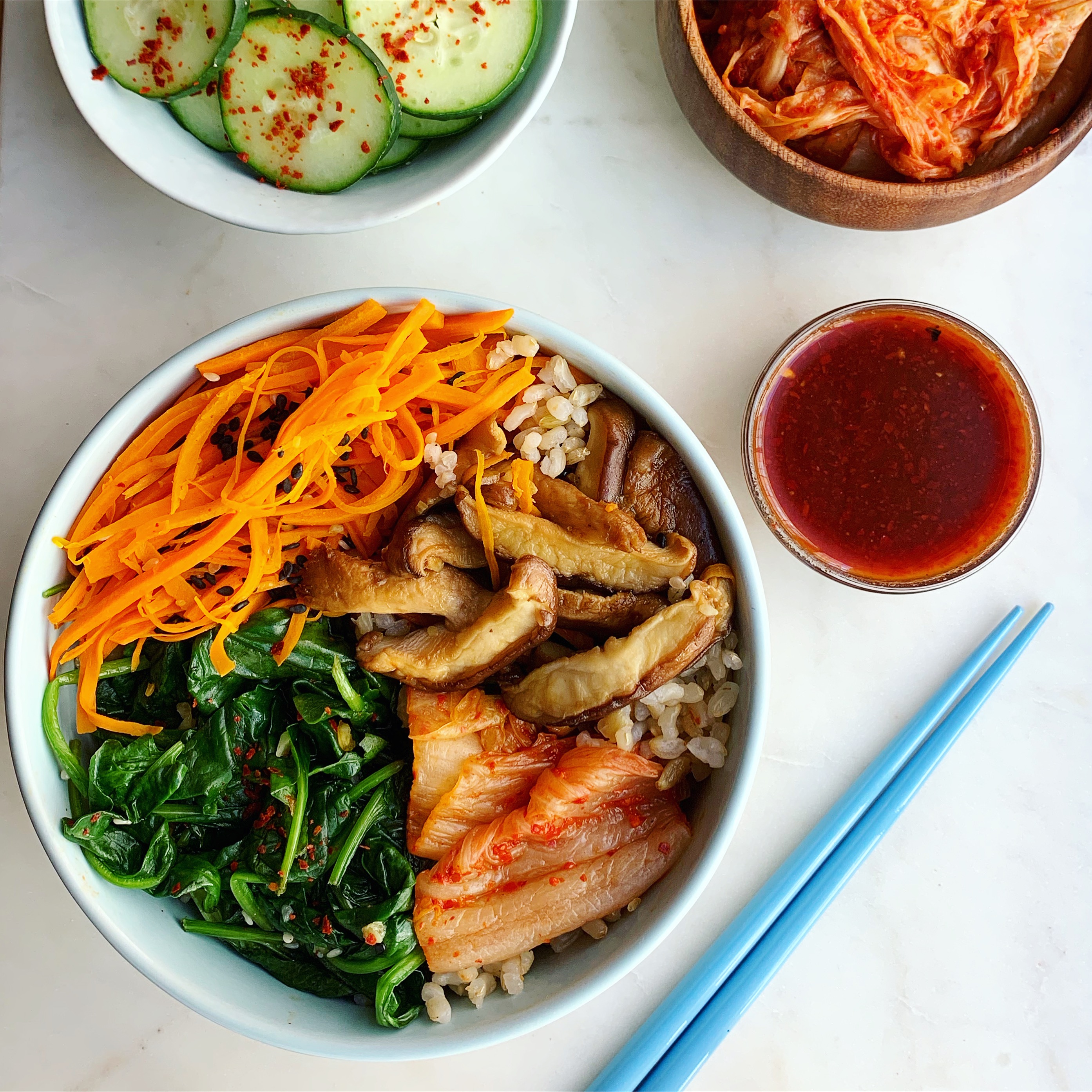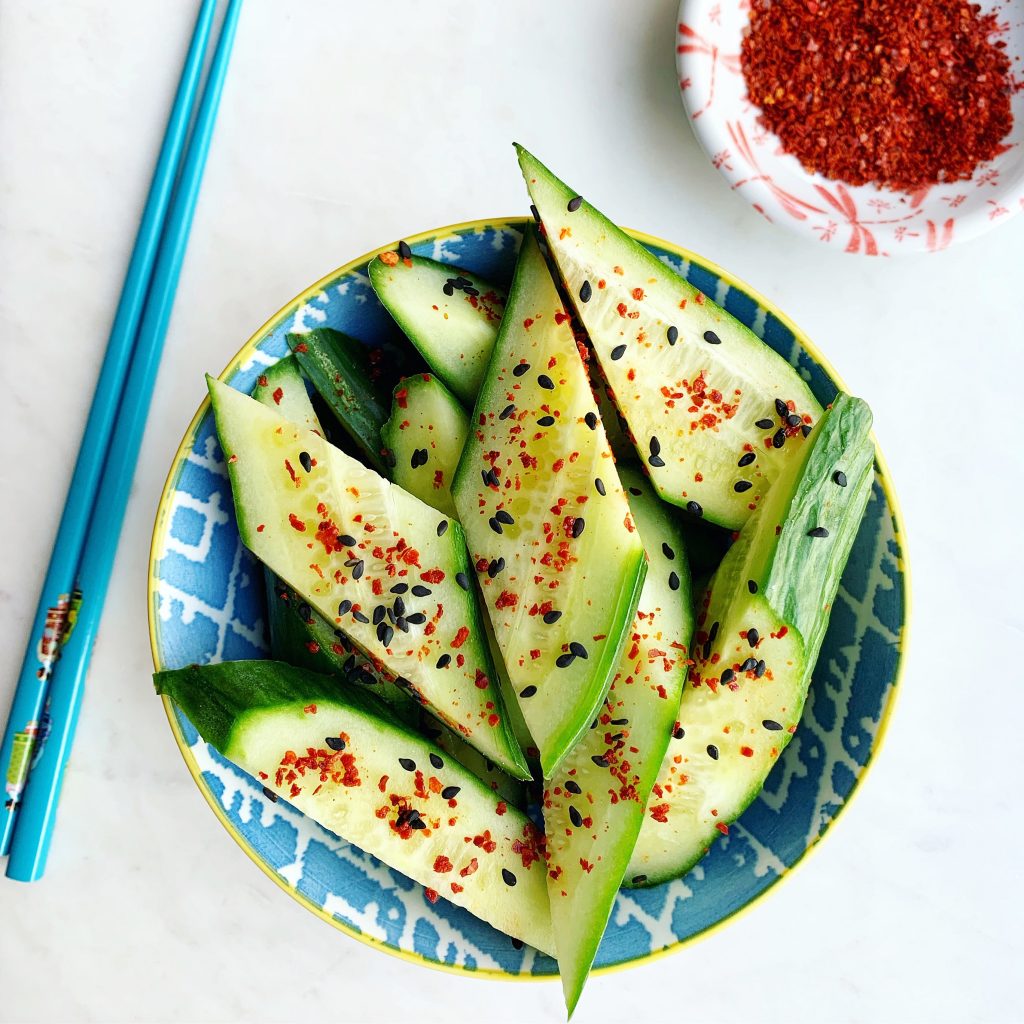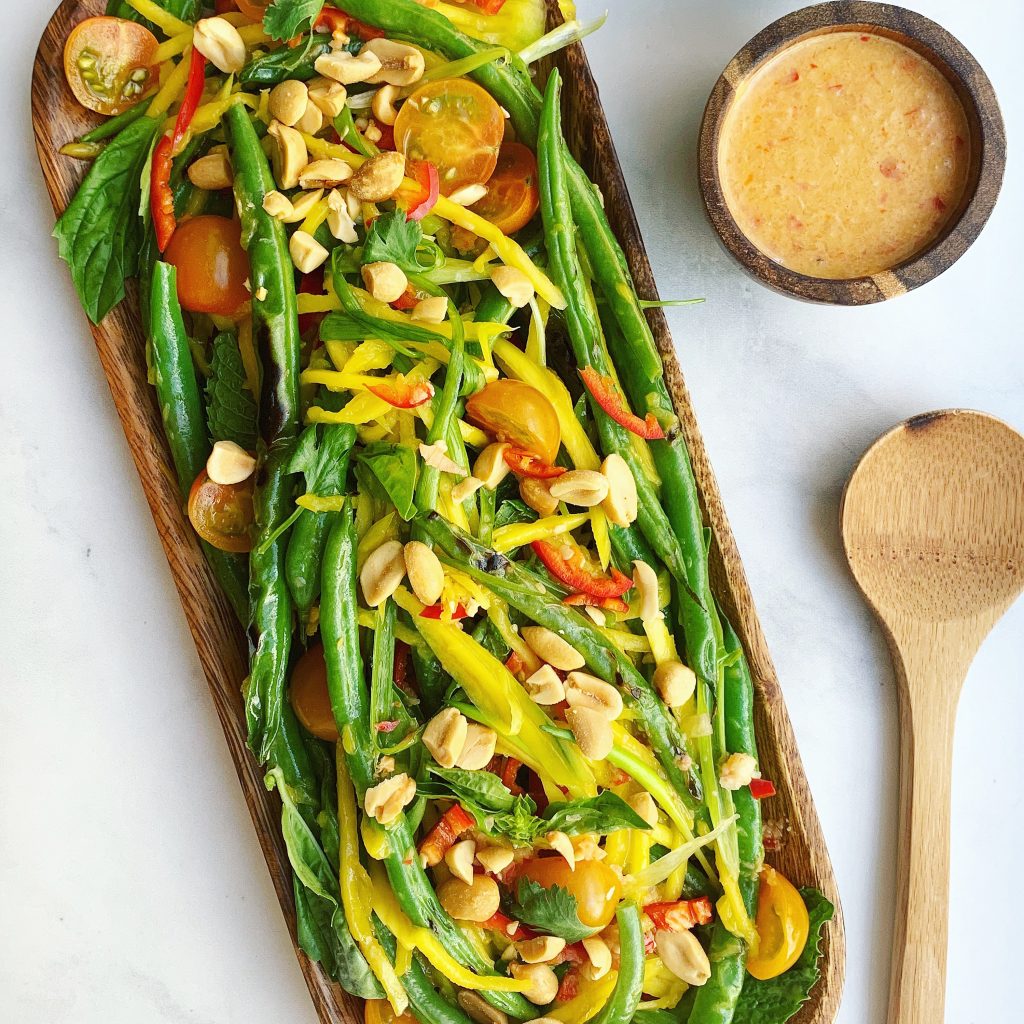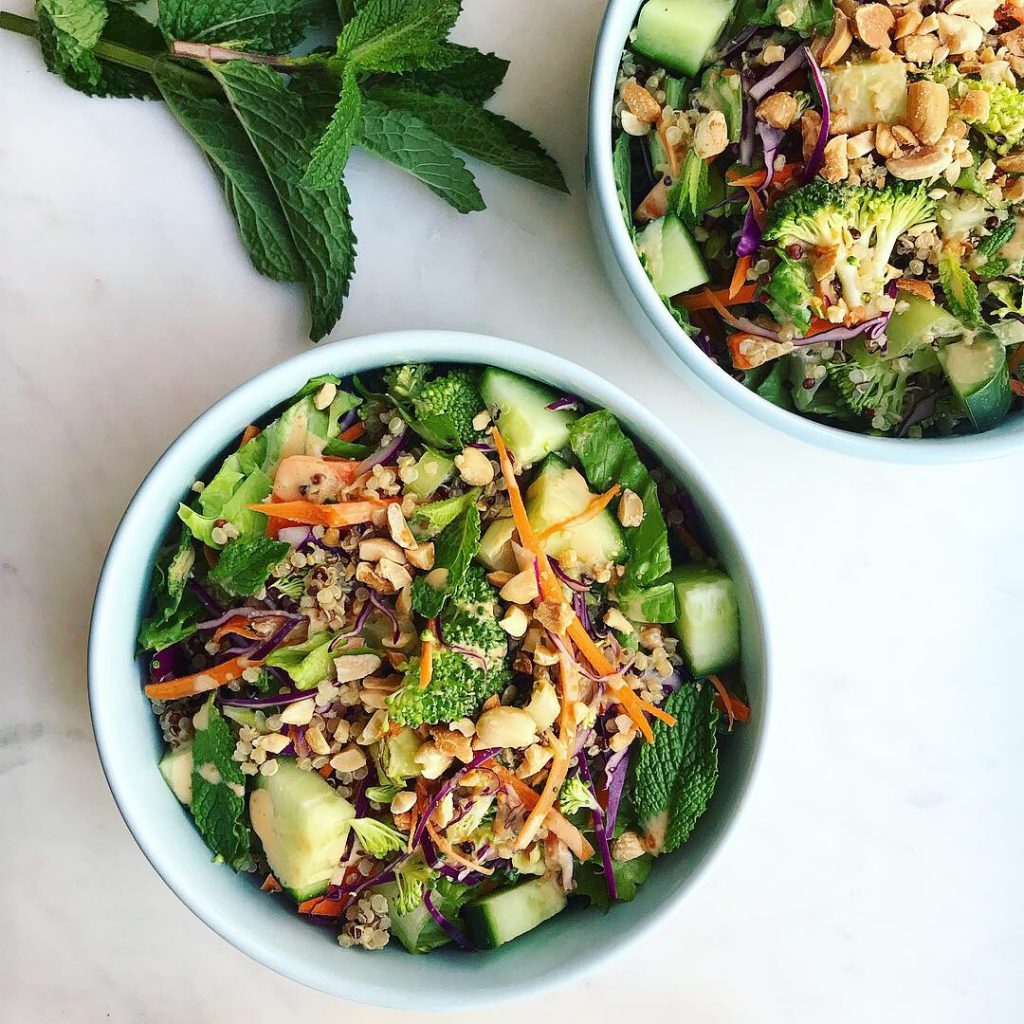If you are stuck in a recipe rut then it’s time to mix it up (literally!) with this Spicy Vegan Bibimbap. I say “mix it up”, because this is what bibimbap means.
Bibim = mixed, and bap = rice. Oh, and it’s pronounced bee-bim-bap, in case you are curious.
Bibimbap is a staple dish in Korean cuisine. It is composed of short-grain rice, various vegetables, and sometimes egg and meat or seafood. But we are keeping it vegan here.
For my recipe I use short-grain brown rice, then top with carrot namul, spinach namul, and sautéed shiitakes.
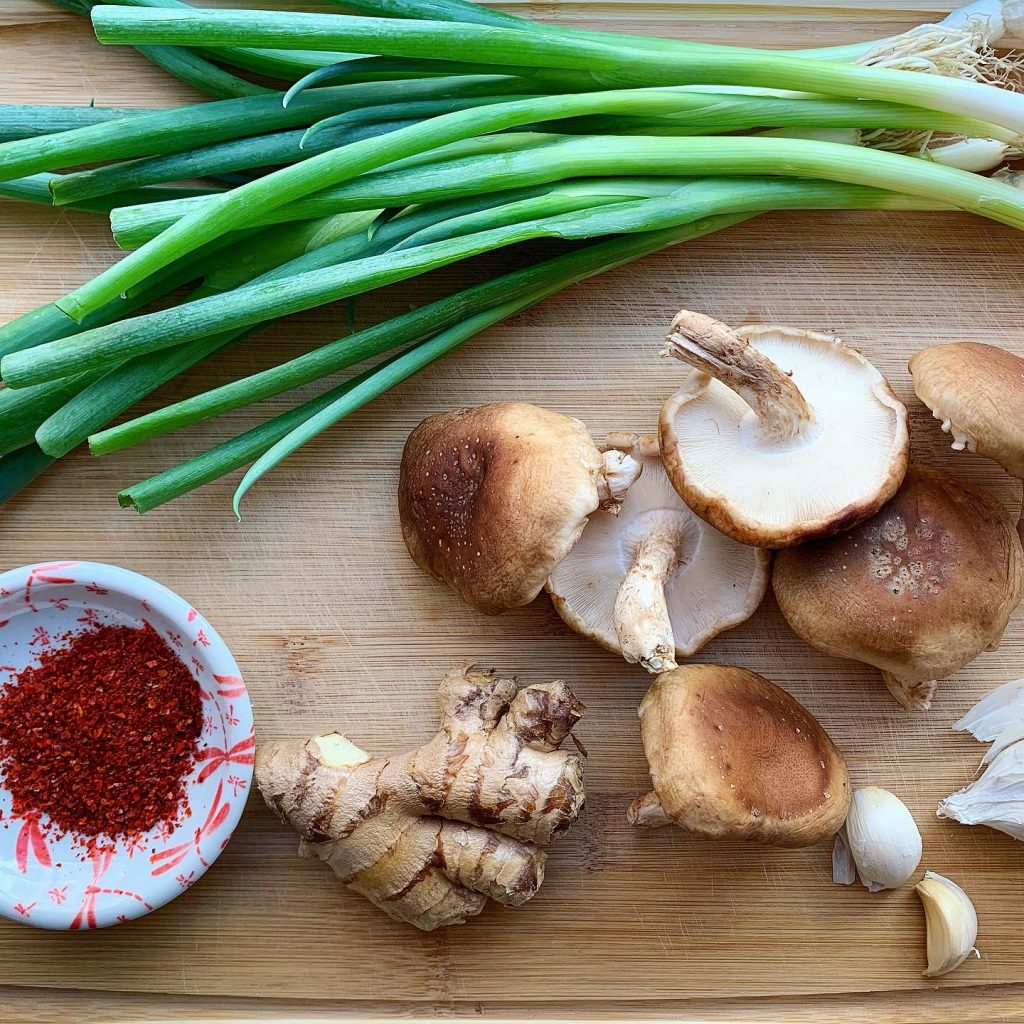
If you’ve never had authentic Korean bibimbap, I highly recommend seeking it out. I recently had amazing vegetable bibimbap at Hangawi here in NYC.
At Hangawi they serve bibimbap in the traditional style, in a piping hot stone bowl called a dolsot, and mix it for you table side. And because the dolsot is so hot, the rice becomes almost fried as they mix it and stays hot during the entire meal.
Bibimbap is served with various Korean side dishes, known as banchan. These could include kimchi, radish salad, spicy cucumbers or namul. Namul is various marinated, steamed or sautéed vegetables usually seasoned with salt or soy sauce, scallion, garlic, vinegar, or some combo thereof.
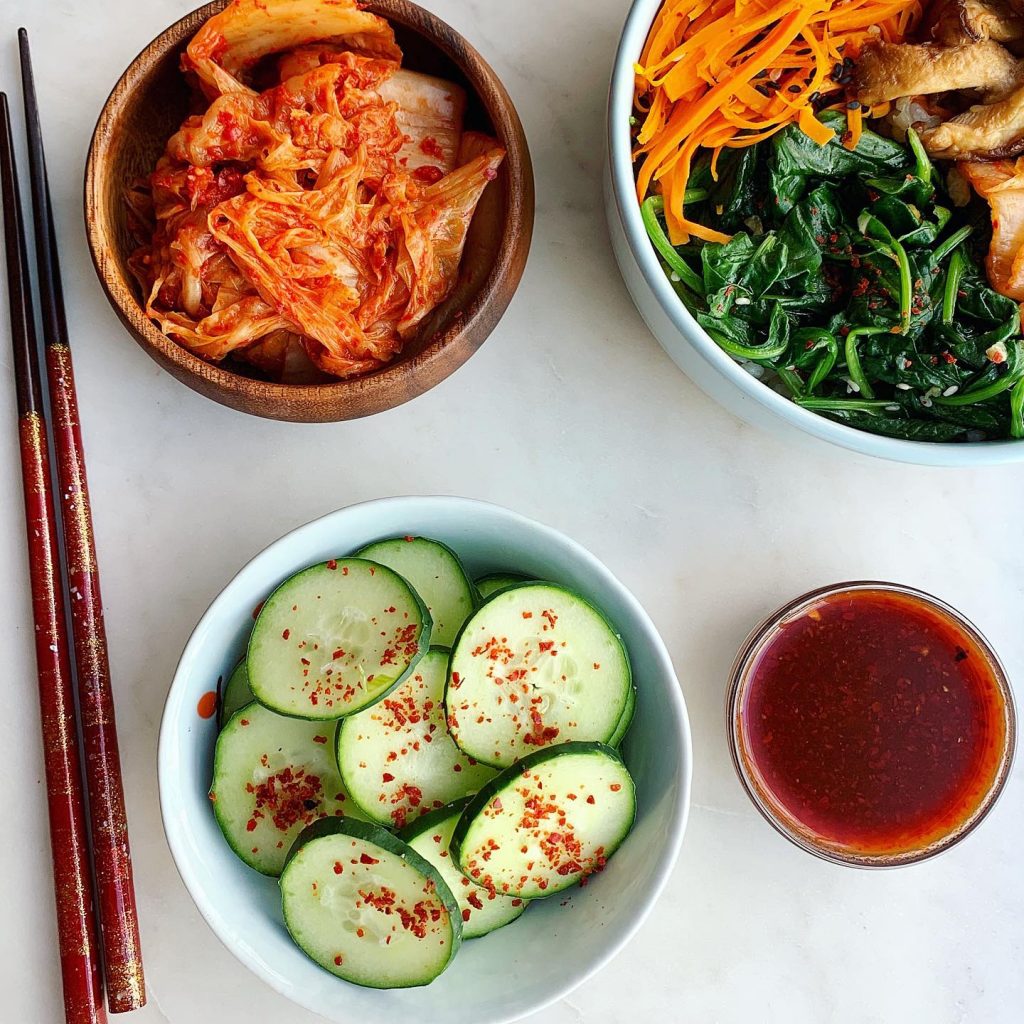
Kimchi and cucumbers with gochugaru flakes
Click on the pic below for the link to my recipe for Spicy Korean Cucumbers!
TIP: eat bibimbap with a traditional Korean spoon and eat the side dishes with chopsticks.
Gochugaru Cucumbers are the perfect “banchan” (side)
Now, on to the recipe!
Rather than use white rice I went with brown. Again, using short-grain to keep it close to authentic. I also happen to prefer short-grain rice to long-grain, as it has a firmer more al dente texture.
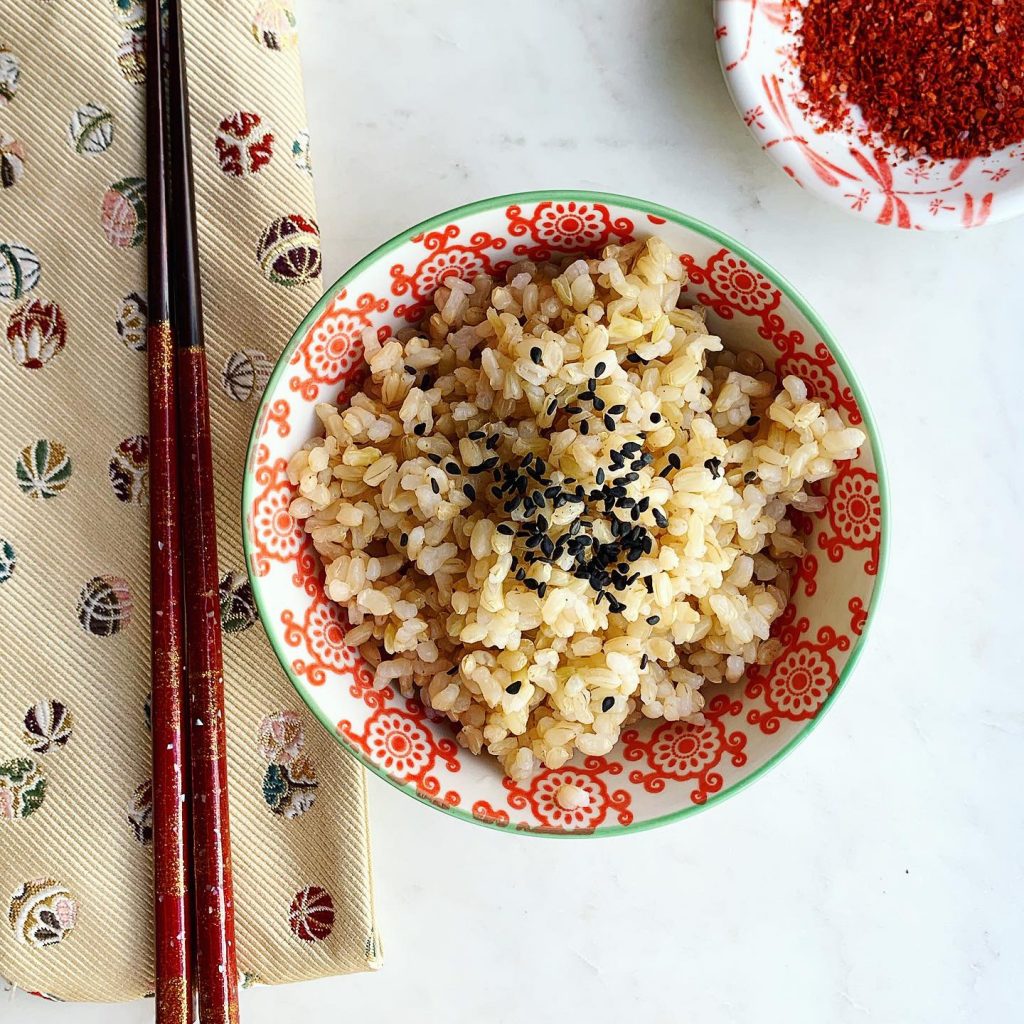
I like using short-grain brown rice here
From there I did carrot namul, spinach namul, and sautéed shiitake mushrooms. And of course, kimchi on the side because I love spicy and love fermented vegetables! I like Mother in Law’s vegan kimchi, which you can find at Whole Foods, etc.
For the namul, you can prepare as you like based on the description above, but here is what I did:
carrot namul = carrot + garlic + scallion + salt + sesame oil + sesame seeds
spinach namul = spinach + garlic + scallion + salt + sesame oil + sesame seeds
shiitakes = shiitakes + garlic + soy or coconut aminos + sesame seeds
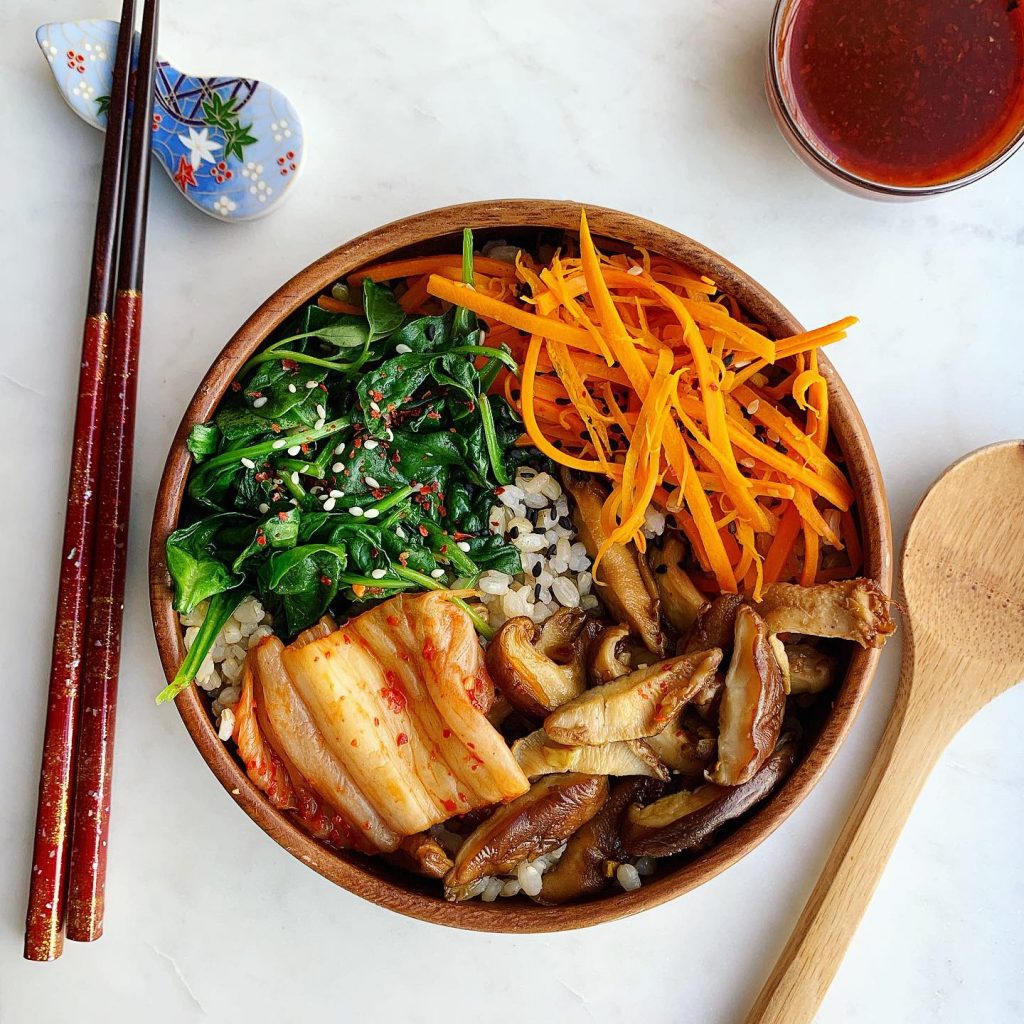
The sauce brings the dish together, don’t skip it!
For the bibimbap sauce you can use gochujang, which is staple of Korean cuisine (and is a fermented chili pepper sauce/paste). If you want authentic, you can find Mother In Law’s Kimchi gochujang in most supermarkets. Or go to a Korean market.
However, because the authentic version has gluten, I made my own version of gochujang using Mama O’s kimchi paste and it turned out great!
I also subbed coconut aminos for soy, which is a great sub if you are soy averse.
Bringing it all together..
So, you cook your rice, then prepare the vegetable namul and sauce. Then top rice with namul and sauce. And be sure to “mix it up” before eating, to get all of the good flavors combined.
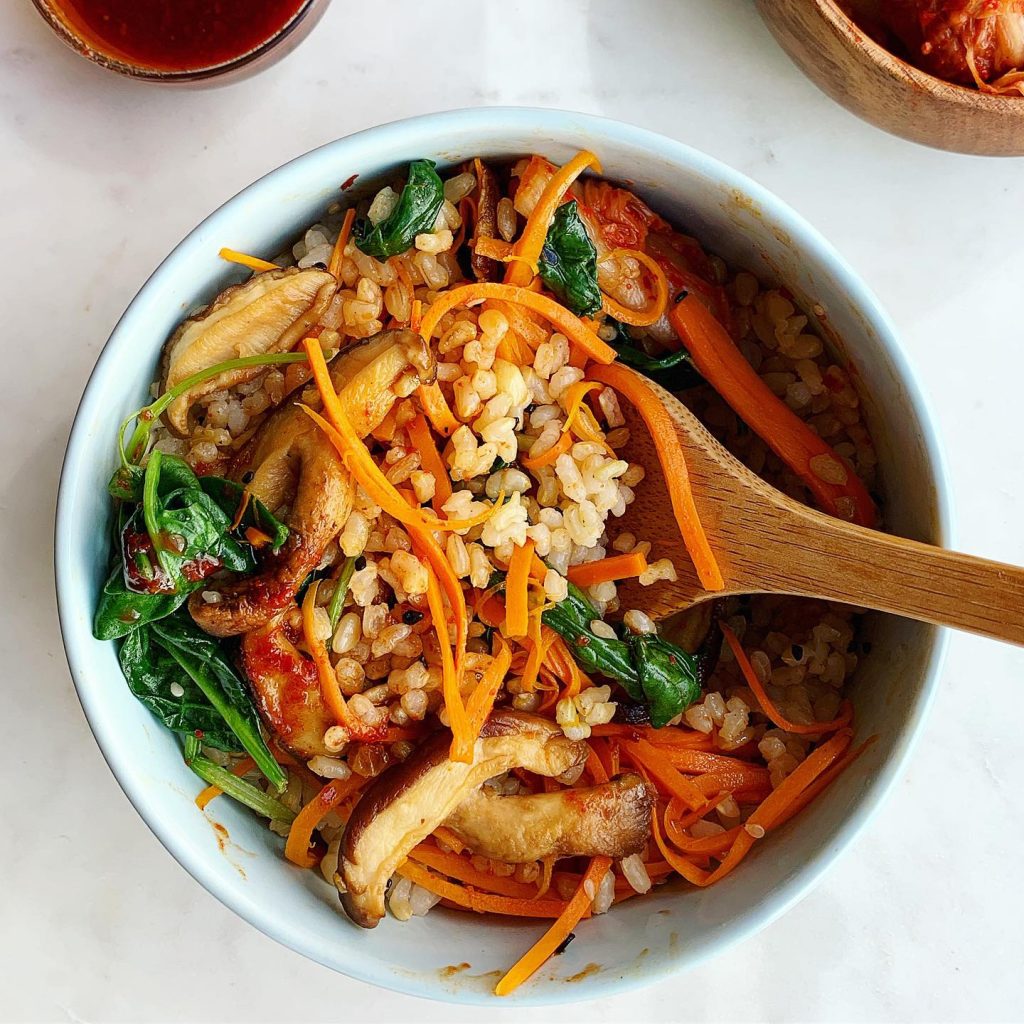
Bibimbap mixed and ready to enjoy!
If you make this recipe, leave a comment below or tag me on Instagram. I love seeing what you come up with!
Like Asian recipes? Check these out…
Som Tum Mamuang (vegan, GF)
Thai Quinoa Crunch Salad (vegan, GF)
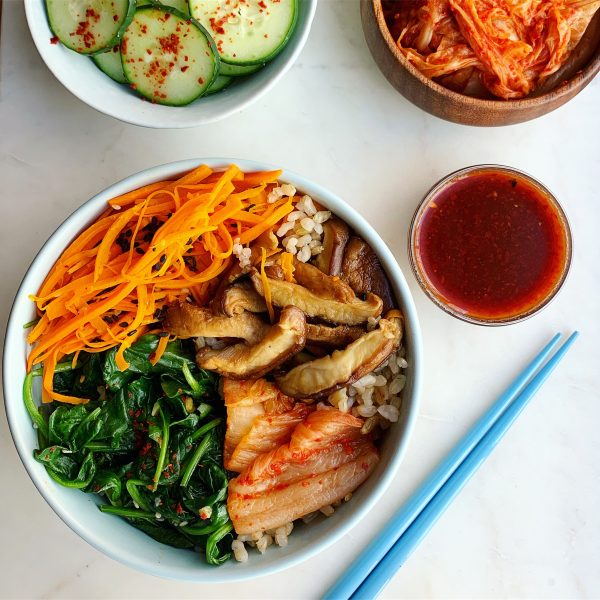
| Prep Time | 60 minutes |
| Cook Time | 45 minutes |
| Servings |
servings
|
- 2/3 cups raw short-grain brown rice
- 3 tsp neutral oil such as avocado divided
- 1 1/2 tsp toasted sesame oil divided
- 1 1/2 tsp toasted sesame seeds divided
- 3 cloves garlic minced and divided
- 2 cups julienned carrot about 1 large or 2 medium carrots
- 2 scallions green and white parts, sliced thin (optional)
- 4 cups fresh baby spinach
- 8 - 10 shiitake mushrooms sliced
- 1 tsp coconut aminos or soy sauce
- 1 tbsp kimchi paste or gochujang see blog post for notes
- 1 tbsp coconut aminos or soy sauce
- 1 tsp honey or sub coconut sugar or brown sugar for vegan
- 1 tbsp filtered water
- vegan kimchi see blog post for brand rec
- Gochugaru Cucumbers see blog post for recipe link
Ingredients
Rice ingredients
Vegetable namul ingredients
Bibimbap sauce ingredients
Optional banchan (sides)
|

|
- cook rice with a generous pinch of salt according to package directions (about 45 minutes), then fluff with a fork
- make carrot namul: heat 1 tsp of neutral oil in a sauté pan over medium-low heat, sauté 1 clove of minced garlic until fragrant but not browned 1-2 minutes, add carrot and scallion and sauté until tender, about 3-4 minutes; season with 1/2 tsp sesame oil and a pinch of salt, sprinkle with sesame seeds, remove and set aside
- make spinach namul: in same pan, heat 1 tsp of neutral oil over medium-low heat, sauté 1 clove of minced garlic until fragrant but not browned 1-2 minutes, add spinach and cook until just wilted, about 2 minutes; season with 1/2 tsp sesame oil and a pinch of salt, sprinkle with sesame seeds, remove and set aside
- sauté shiitakes: in same pan, heat 1 tsp of neutral oil over medium-low heat, sauté 1 clove of minced garlic until fragrant but not browned 1-2 minutes, add sliced shiitakes and cook until almost tender, about 4 - 5 minutes; add 1 tsp coconut aminos or soy the last minute or two of cooking, sprinkle with sesame seeds, remove and set aside
- in a small bowl whisk sauce ingredients, adjust as needed; recipe makes a scant 1/4 cup, you can double quantities if you want more sauce
- place rice in bottom of two shallow serving bowls, then divide carrots, spinach and shiitakes evenly, serve hot with Bibimbap Sauce and optional banchan (sides)
Original recipe created by Jerran Boyer
www.healthnutchefs.com

